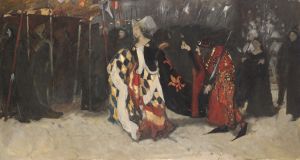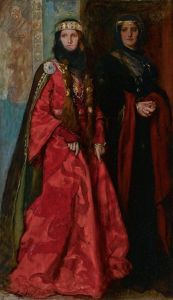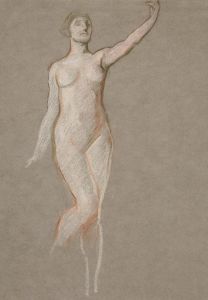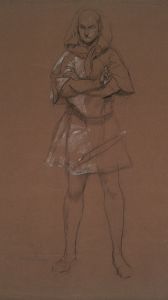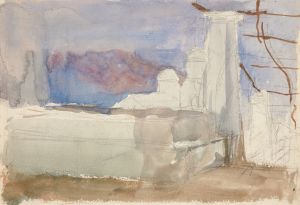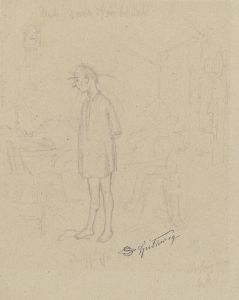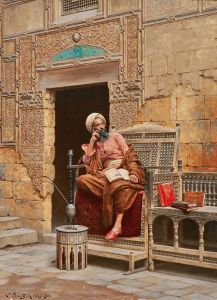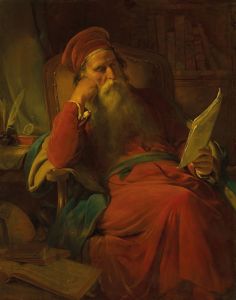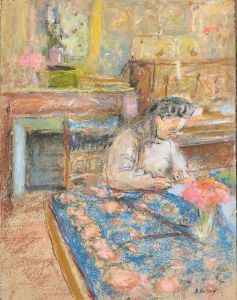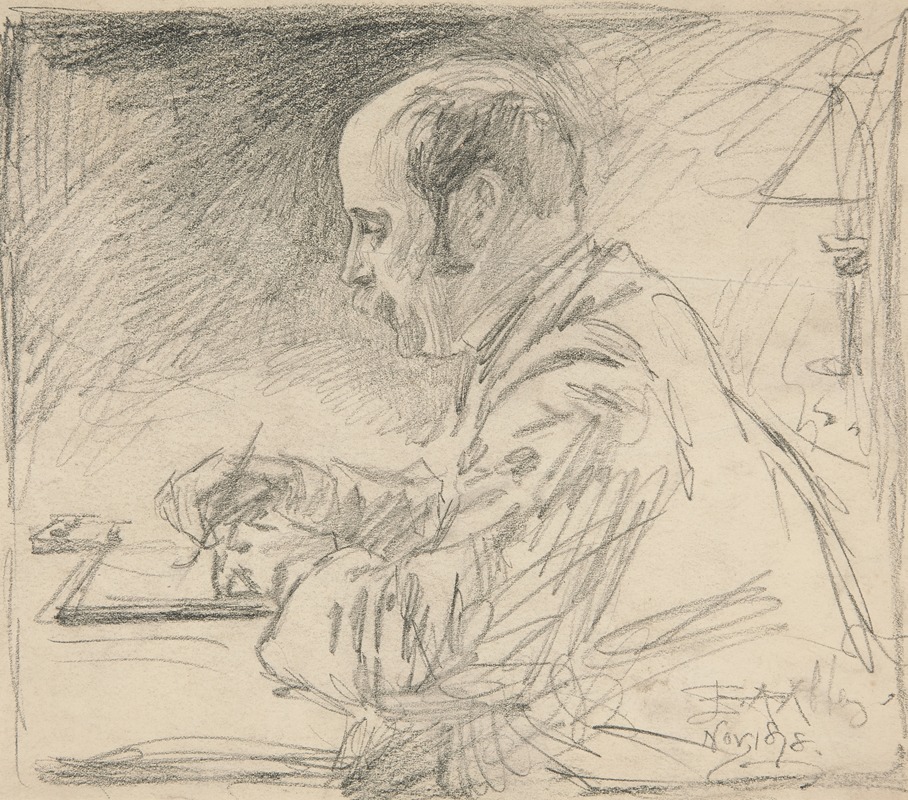
Portrait of a man, left profile, writing at desk
A hand-painted replica of Edwin Austin Abbey’s masterpiece Portrait of a man, left profile, writing at desk, meticulously crafted by professional artists to capture the true essence of the original. Each piece is created with museum-quality canvas and rare mineral pigments, carefully painted by experienced artists with delicate brushstrokes and rich, layered colors to perfectly recreate the texture of the original artwork. Unlike machine-printed reproductions, this hand-painted version brings the painting to life, infused with the artist’s emotions and skill in every stroke. Whether for personal collection or home decoration, it instantly elevates the artistic atmosphere of any space.
Edwin Austin Abbey was an American artist known for his illustrations and paintings, particularly those depicting Shakespearean and Victorian themes. One of his works, "Portrait of a Man, Left Profile, Writing at Desk," showcases Abbey's skill in capturing the essence of his subjects through detailed and expressive portrayals.
Edwin Austin Abbey was born on April 1, 1852, in Philadelphia, Pennsylvania. He began his artistic career as an illustrator, contributing to magazines such as Harper's Weekly. Abbey's work was characterized by its attention to detail and historical accuracy, which made him a sought-after illustrator for literary works. His illustrations for Shakespeare's plays and other classic literature gained him significant recognition.
"Portrait of a Man, Left Profile, Writing at Desk" is a fine example of Abbey's ability to convey character and mood through portraiture. Although specific details about the painting's creation, such as the date and the identity of the subject, are not well-documented, the work reflects Abbey's interest in capturing the intellectual and contemplative nature of his subjects. The painting depicts a man in profile, seated at a desk, deeply engaged in writing. The focus on the man's profile and his activity suggests a narrative quality, inviting viewers to ponder the thoughts and ideas being committed to paper.
Abbey's technique in this portrait, as in many of his works, demonstrates his mastery of light and shadow, which adds depth and dimension to the composition. The careful rendering of the man's features and the surrounding environment highlights Abbey's dedication to realism and his ability to create a lifelike representation. The use of a limited color palette and the emphasis on line and form are indicative of Abbey's illustrative background, which often informed his approach to painting.
Throughout his career, Abbey was influenced by the Pre-Raphaelite Brotherhood and the Aesthetic Movement, both of which emphasized beauty and detail in art. These influences are evident in "Portrait of a Man, Left Profile, Writing at Desk," where the meticulous attention to detail and the harmonious composition reflect the ideals of these movements.
In addition to his work as an illustrator and painter, Abbey was also known for his murals. He was commissioned to create murals for the Boston Public Library and the Pennsylvania State Capitol, among other notable projects. His contributions to the arts were recognized during his lifetime, and he was elected to the National Academy of Design and the Royal Academy of Arts in London.
Edwin Austin Abbey passed away on August 1, 1911, in London, England. His legacy as an artist endures through his illustrations, paintings, and murals, which continue to be appreciated for their historical significance and artistic merit. "Portrait of a Man, Left Profile, Writing at Desk" remains a testament to Abbey's skill in capturing the human experience through art, reflecting both his technical proficiency and his ability to convey narrative through portraiture.





